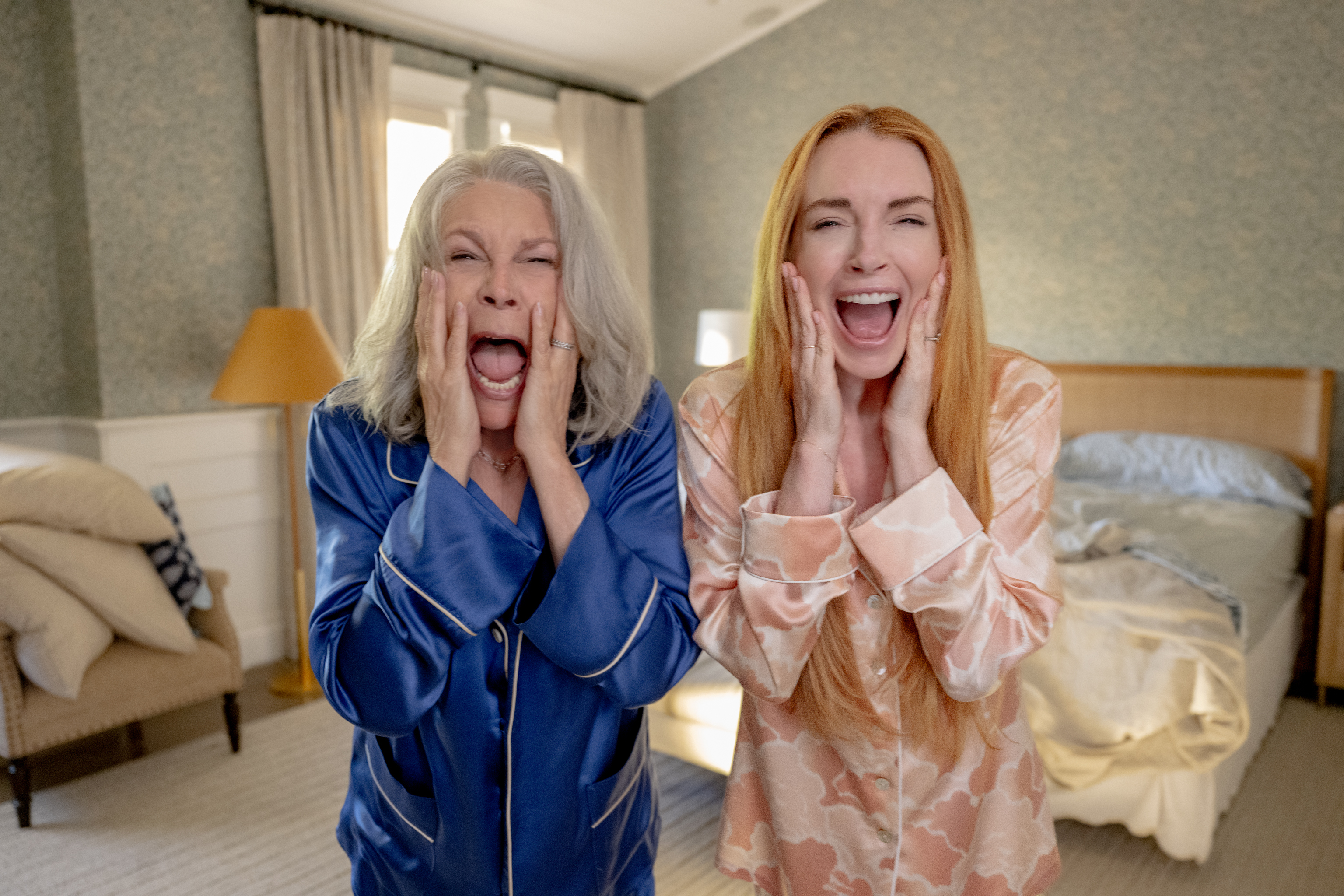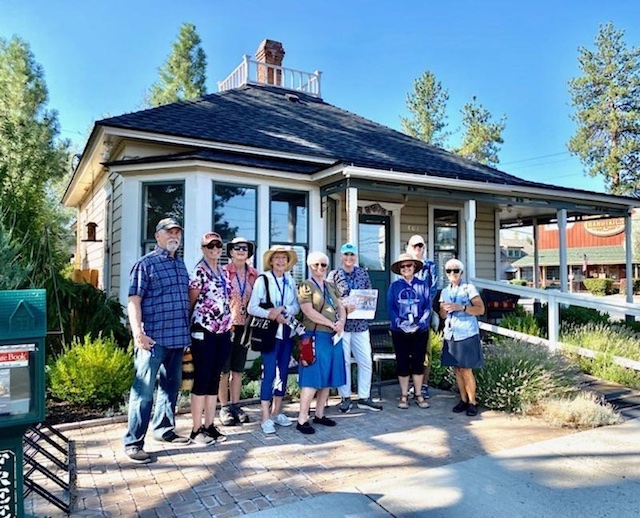Meeting The Beatles (and the Hermits, and the Stones)
Published 12:00 am Sunday, April 7, 2019

- Meeting The Beatles (and the Hermits, and the Stones)
Marilyn Eggert learned the value of writing letters thanks to a teenage obsession with The Beatles.
At the height of Beatlemania and the British Invasion in August 1965, the mop-topped Liverpudlians embarked on their second U.S. tour, which included two shows at the Hollywood Bowl. Eggert, then Marilyn Caldwell, was a 17-year-old high school senior living in the Los Angeles area. She heard about the tour and was determined to meet her favorite band. But there was a problem:
Trending
“When The Beatles launched, someone — Tony Barrow (Beatles press officer) or somebody in there — decided, ‘OK, we’re gonna make you untouchable,” Eggert said recently from her home in Bend. “‘No one can interview you, no one can meet you.’ So everybody wanted to meet The Beatles. … I realized that the only people who met The Beatles were reporters.”
In January 1965, Eggert wrote a letter to the Los Angeles Times’ editorial board. (She received some encouragement from her father, who worked for the Times as a compositor, hand-setting type for the paper.)
In a separate letter she wrote to her uncle about her experiences with the Times that was published in the Santa Paula Daily Chronicle in late 1965, she stated: “I pointed out that the average adult reporter couldn’t care less about the mop-topped quartet, while a teenager would know more about the singers and generate more interest.”
She doesn’t have a copy of the letter today, but she does have the two responses sent back to her by Los Angeles Times editors. The second response, sent in March 1965, kicked off Eggert’s yearlong career as the paper’s teenage reporter, a correspondent position that paid $25 per inch of copy, she said.
“That was the first time I realized that they were gonna let me do it,” Eggert said. “(The first response) almost sounded like, ‘Eh, it’s a good idea, we’ll give it a thought.’ It was maybe a polite no.”
Eggert graduated high school that summer and began covering The Beatles Aug. 23, 1965, when the band arrived in Los Angeles. The group stayed the week at a house at 2850 Benedict Canyon Drive, where they were bombarded by fans (Eggert covered this, too, in a story for the Times headlined “‘Beatlemaniacs’ (90% Girls) Won’t Give Up”). She finally met her favorite Beatle, Paul McCartney, on Aug. 29, when The Beatles conducted a press conference at the Capitol Records building before the first show that night.
Trending
“They answered questions and (there were) all these people around, and then I was waiting for some reason,” Eggert said. “They left the room — almost everybody left the room — and then all of a sudden Paul came back and he had forgotten something up there. And so I walked up and asked if I could shake his hand, and then I told him who I was. And while still holding my hand, he told me he had been reading my articles and really enjoyed them. So that was a high point.”
It would be the first of many. From 1965 through 1966, Eggert met and interviewed Peter Noone and Herman’s Hermits, Bobby Vinton, The Rolling Stones, The Rascals (then The Young Rascals) and The Lovin’ Spoonful, among others.
Other than the Fab Four, of course, Herman’s Hermits and The Lovin’ Spoonful stand out in Eggert’s mind. The former ended up being her second assignment for the Times. The band was staying at the same Benedict Canyon house The Beatles had set up shop in, and Eggert had something of an in — her mother, like the Hermits, originally hailed from Manchester, England.
“I managed to find the phone number for the house, so I called them and told them that I was a teenage reporter for the L.A. Times, which technically I wasn’t anymore — they just had me on to do The Beatles,” Eggert said. “(I) asked if I could have an interview. The manager answered the phone and then he handed the phone to Peter Noone, Herman. And he said, ‘Sure, come tomorrow night for dinner.’”
She ended up having dinner with the Hermits three nights in a row, then called the editor at the Times. Her story, “Teen-ager Discovers Hermits,” ran in September 1965.
“And that’s how it began for a while, because then they said, OK, this works,” she said. “Every week I would go on Sunset Boulevard and go to the different clubs where these — it was an amazing time because they were big names, or maybe they were just on the verge of being big names. But I would go to The Trip and The Whiskey A-Go-Go and The Troubadour and all of these clubs, and I was 17, but they didn’t care.”
Eggert met and interviewed The Lovin’ Spoonful before the band played the grand opening of The Hullabaloo Club (formerly the Moulin Rouge) in Los Angeles in 1966, she said. A few days later, she was driving down Hollywood Boulevard with a friend, when she glanced over and noticed the group sitting in the car next to hers.
“They waved at me and said, ‘We’re on our way to the recording studio, do you want to come?’” Eggert said. “And I said, ‘Let me think about it, yes.’ And so I went and watched them record all day long, and that’s when they recorded the ‘Daydream’ album (released in 1966).”
When former Lovin’ Spoonful frontman John Sebastian played the Tower Theatre in January, Eggert was able to reconnect with the singer. Though he didn’t seem to remember her at first, Eggert said she was able to jog his memory with a story about guitarist Zal Yanovsky.
“(The song) ‘Daydream,’ there is a part in there that’s whistling, and Zally was doing the whistling,” she said. “And they had just gone to lunch and come back, and he was supposed to be doing the whistling and he couldn’t do it because he had had chocolate milk for lunch, and John was not happy with him.”
While Eggert has a large collection of memorabilia from her reporting days, including autographs from The Beatles, Herman’s Hermits and others, she said she never asked for an artist’s signature or a photo.
“I wanted to be the real thing,” she said, “and so when I got autographs, it wasn’t because I requested them.”
After writing her last story for the Times in 1966, Eggert decided to change direction. She ended up working for stockbroker Bankhouse Bache in Munich, Germany, for a couple of years before relocating to Seattle and then Vashon Island, marrying and raising four kids in the process.
Still, her newspaper days helped open other doors. While living on Vashon Island, she ended up getting a job at a technical magazine, Machine Knitters Source, eventually working her way up to become an editor.
“I would end up being the last pair of eyes to go over the entire magazine cover-to-cover before it went to press, because I have this reputation,” she said.
Her oldest son, Jason Eggert, 45, has lived in Bend since 2012 (he and his family convinced Marilyn to move here about four years ago, she said). He is also a Beatles fan, although not as much of one as his son, Ethan, he said. Marilyn ended up giving Jason some of her Beatles autographs a while ago (although Jason insisted he’s just “holding them for her”).
“She would never make a big deal of it,” he said of his mother’s newspaper days. “It was just one of the stories we had of when she was younger, that’s what she did. She told stories about how she went to Europe after high school and stuff and lived there, in Germany and stuff, to kind of show us kids that you can be outgoing just to do cool things. And I think it inspired us. One of my brothers would write letters — he wrote letters to baseball players and stuff. … I think he invited a baseball player to his birthday. We were up in Seattle, and he wrote a letter to somebody and they actually called back and said, ‘Sorry I can’t make it to your birthday.’”
Marilyn Eggert covered rock ’n’ roll music in its nascent days, and by today’s standards had unprecedented access to artists. The Beatles’ restrictions, which led Eggert to write to the Times in the first place, are the norm for most artists nowadays. But Eggert still has similar advice to anyone looking to write about music (or maybe just meet their favorite artist): Do your research, be passionate, know your stuff and above all, send a physical letter.
“One letter can really do a lot,” she said.
— Reporter: 541-617-7814, bmcelhiney@bendbulletin.com








